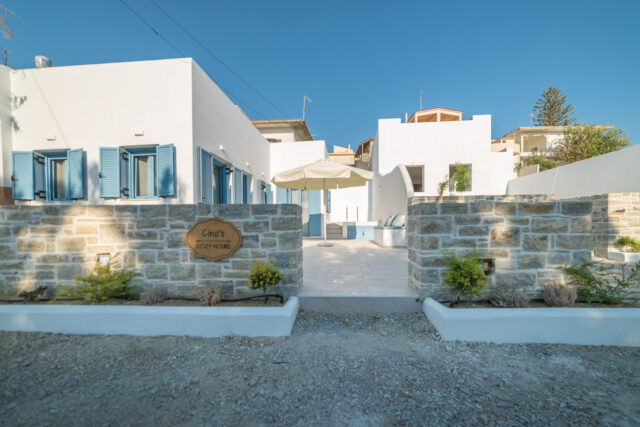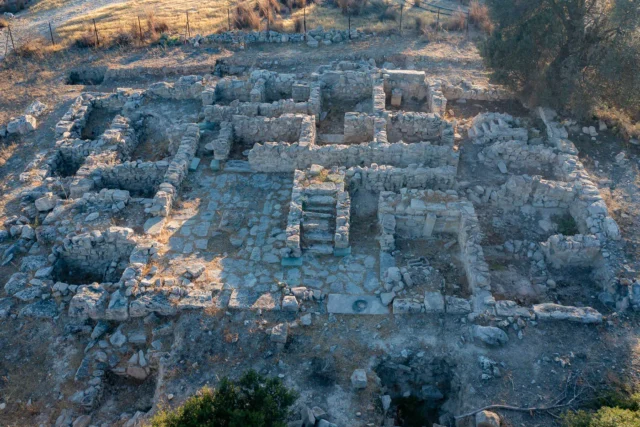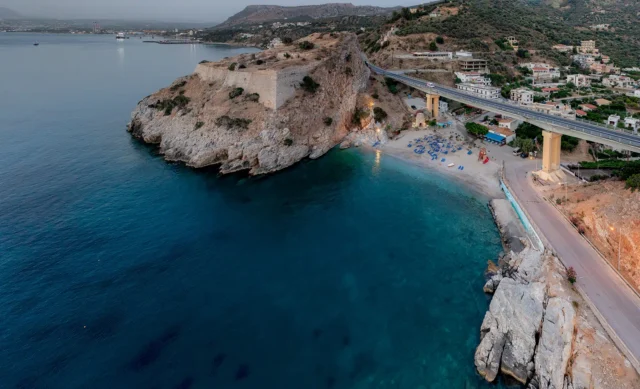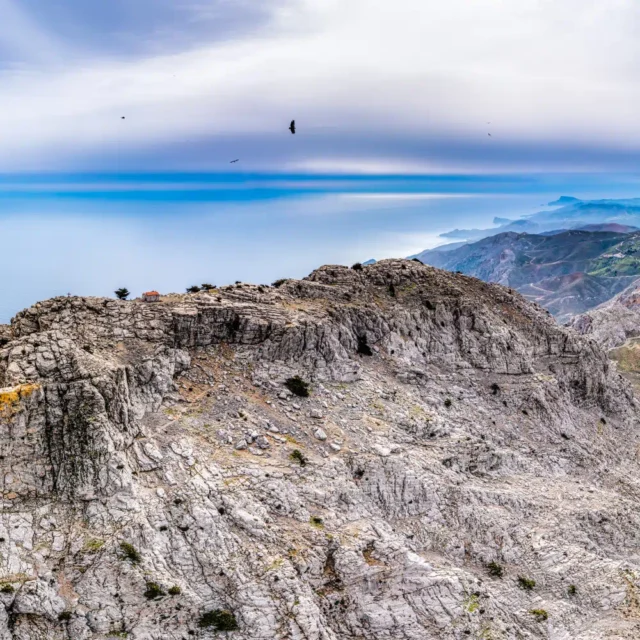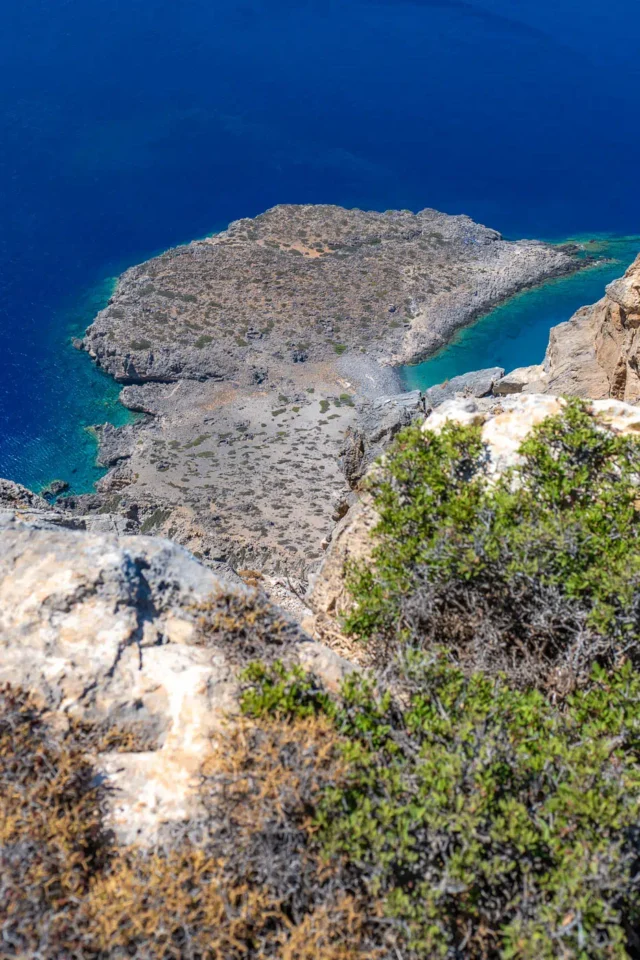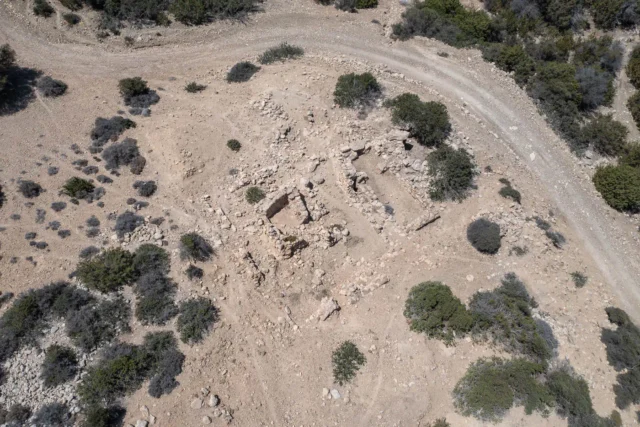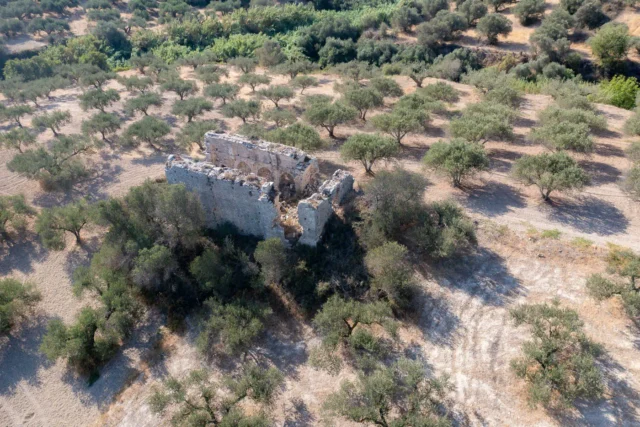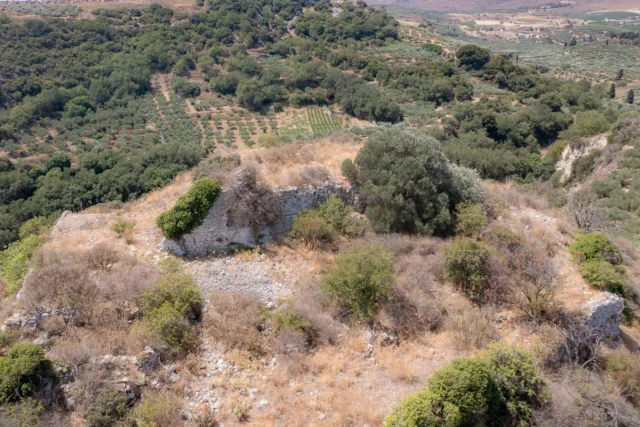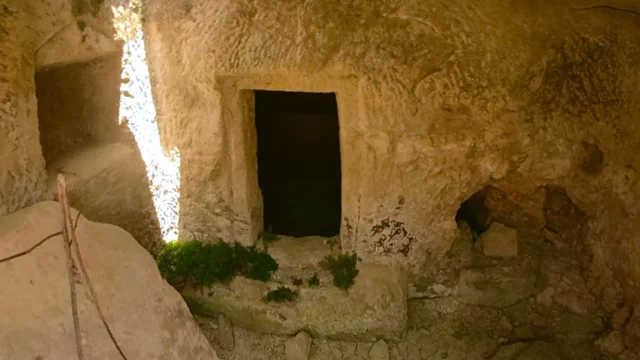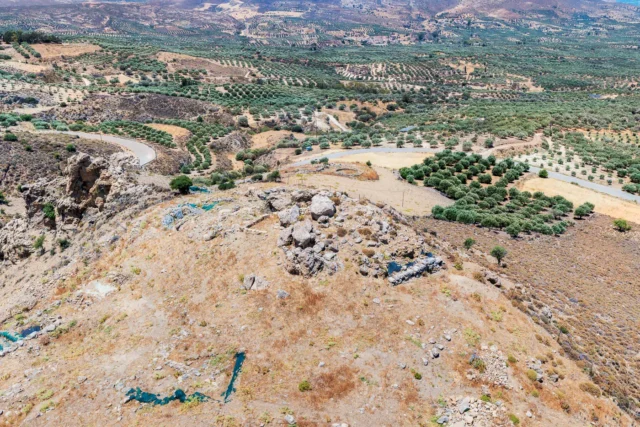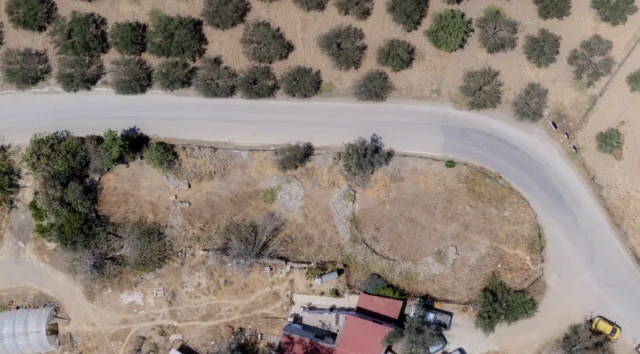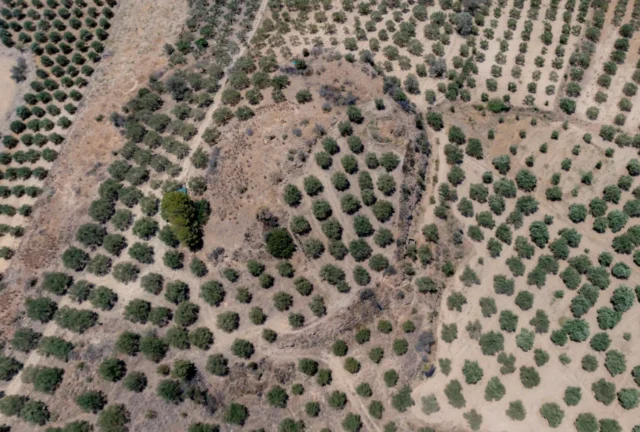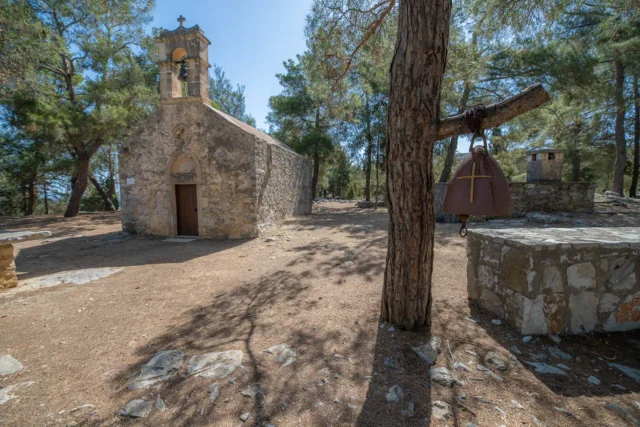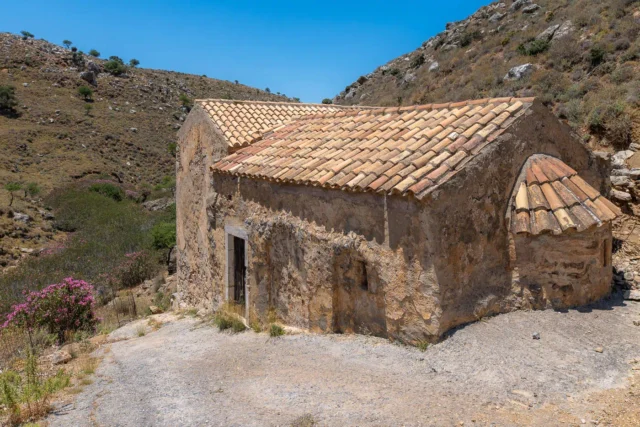415
listings found
Categories
Active filters:
Cozy houses
Two cozy houses with jacuzzi in Kamilari, with one bedroom, big yard and big living room and kitchen.
Pitsidia Minoan villa
Minoan villa ruins near Pitsidia, Crete, dating back to 1700-1450 BC. Insights into Minoan daily life, architecture, and earthquake response.
Paleokastro beach
Paliokastro beach, 14 kilometers west of Heraklion, features a blend of natural beauty and historical significance. Located within a valley carved by mountain streams, the cove includes a Venetian fortress, Paliokastro, built on the ancient Kytaeon acropolis. The beach has deep waters, a pebble shoreline, and rocky seabed suitable for snorkeling and fishing. Residents frequent this tranquil area, which offers tavernas, hotels, and a mini-market in a restored limekiln. The beach is accessible via the Heraklion-Chania highway.
Kofinas peak
Kofinas peak sanctuary in Crete offers insights into Minoan religious practices, societal structures, and the relationship between humans and the natural world.
Lithino Cape, Kefali peak
Lithino Cape, the southernmost point of Crete, features a rugged landscape with cliffs and remnants of WWII German fortifications. The cape's strategic location, offering a commanding view of the southern coastline, led the Germans to construct these fortifications to defend against potential invasion. Mount Kefali, situated on the cape, rises to an elevation of 388 meters and offers stunning views of the coastline, Gavdos, and the Asterousia Mountains. Atop Kefali Peak stands the small stone church of Timios Stavros, a testament to the site's enduring importance as a place of worship and refuge. The ruins of pillboxes built by the Germans during the Second World War are a stark reminder of the cape’s strategic value.
Skaniari Lakkos
Skaniari Lakkos, a Minoan cemetery complex located in the Asterousia Mountains of southern Crete, provides valuable insights into Minoan burial practices and social organization during the Bronze Age. It features five distinct burial structures, including two tholos tombs and three rectangular buildings, each containing multiple chambers and showcasing a variety of architectural styles. These structures date back to the Final Neolithic period (c. 3500 BC) to the Middle Minoan IB period (c. 1900 BC). Excavations at Skaniari Lakkos have yielded a wealth of artifacts, including pottery vessels, stone tools, jewelry, and seals, providing information about Minoan material culture, artistic expression, and trade networks. The presence of imported goods suggests connections with other regions in the Aegean and beyond. The site's remote location and the monumental nature of the burial structures underscore the importance of death and the afterlife in Minoan society. Skaniari Lakkos is part of a broader network of Minoan settlements and burial sites in the Asterousia region, including Trypiti, Doukiania, and the tholos tombs of Kefali and Moni Odigitria.
Ruined Church of Michail Archangelos
Located in the fertile Kaminos valley, shared by Skalani, Prassa, and Kallithea villages in Crete, stands the ruined Church of Michail Archangelos. This Venetian-era structure, situated in the Kavousi area, was historically significant due to its proximity to a vital year-round spring. Once part of a medieval settlement, the church is now partially collapsed but remains more intact than the nearby ruined Christos church. Its state underscores the impact of time and possibly seismic events, highlighting the region's vulnerability, as evidenced by the 2021 Arkalochori earthquakes, necessitating preservation efforts for Cretan cultural heritage.
Church of Michail Archangelos
The Church of Michail Archangelos: A Byzantine Monument in Arkalochori, Crete Located in the old cemetery of Arkalochori, a short distance from the village, the Church of Michail Archangelos stands […]
Melesses fortress
The Melesses Fortress, located east of Melesses village in Heraklion, Crete, represents a Byzantine-era stronghold. Its hilltop location provided strategic defense and control of a vital trade route. Architectural ruins reveal stone walls, a central tower, and evidence of earlier Hellenistic occupation. Constructed during the 9th-10th centuries to protect Crete from Arab raids, the fortress highlights Byzantine military and social structures. Its strategic significance is underscored by its proximity to the Karteros River and its role in Crete's defense network. Studies indicate its economic importance in regulating trade between the coast and inland plains. The site's history reflects Crete's complex past and its resilience during the Byzantine period.
Galatas Minoan Palace
Located on Galatas Kephala in central Crete's Pediada region, this significant Minoan urban site features a large palace complex. Occupied from Early Minoan I to Late Minoan III, the palace was built in Middle Minoan IIIA and rebuilt in MM IIIB, the settlement's peak. It functioned as an administrative, economic, and ideological center. Excavations revealed planned architecture with a four-wing palace, central court, ashlar masonry from Alagni, gypsum details, elite houses, and frescoes linked to Knossian styles. Finds include storage jars, evidence of feasting, a shrine model, and workshops for stone vessels and LM IB weaving. Strong ties to Knossos are clear. The town was abandoned in LM III after destruction events.
Kamilari Roman graveyard
The Roman Tombs of Kamilari, located in southern Crete, are an archaeological site that offers a glimpse into the island's history during the Roman period. Discovered in 2010, the tombs are situated at the foot of Evgora Hill, close to Metochi Kamiliariou. The area was known locally as "Xospilios," possibly derived from the Greek word for cave ("spilaio"). The tombs are estimated to have been constructed around 50 AD, based on discovered coins, and provide valuable insights into Roman burial practices. The site is under the supervision of the Archaeological Service.
The Minoan Settlement and Cemetery at Koumasa
Koumasa, an important Minoan archaeological site in southern Crete, is located about 15 km south of Gortyn. The site is significant for its Prepalatial cemetery and Minoan settlement, providing insights into the lives and customs of the Minoans during the Prepalatial period.
The Cemetery at Koumasa consists of three circular tholos tombs, a square tomb, and a circular ossuary. Excavations uncovered artifacts, including a clay figurine depicting a bull-leaping scene, Cycladic figurines, stone offering tables, and gold jewelry.
The Minoan settlement at Koumasa is located on a hill overlooking the cemetery. Excavations have revealed an extensive settlement with evidence of domestic and industrial activities. The presence of large walls suggests the existence of substantial buildings.
Platanos Minoan tholos tombs
The Minoan tholos tombs at Platanos, located in the Messara Plain of Crete, are significant archaeological remains from the Prepalatial period (c. 3200-2000 BC). Excavated in the early 20th century, the site features three tholos tombs (circular, beehive-shaped burial chambers) and a paved courtyard. The tombs, labeled A, B, and C, vary in size and preservation. Tomb A, the largest, has an internal diameter of 13 meters. The tombs contained many artifacts, including seals, figurines, pottery vessels, stone vessels, gold jewelry, and bronze tools. These findings provide valuable insights into Minoan funerary practices and material culture during the Prepalatial period. The presence of imported objects, such as an ancient Babylonian cylinder seal and Egyptian scarabs, also highlights the extensive trade networks that connected Crete with other civilizations in the Eastern Mediterranean.
Kaloi Limenes Minoan tholos tomb
This tomb, a circular burial structure characteristic of the Minoan civilization, offers valuable insights into the burial practices, social structures, and cultural beliefs of the Bronze Age inhabitants of this […]
Minoan Tholos Tomb at Porti
The Minoan Tholos Tomb at Porti, a significant archaeological site in Crete, offers a glimpse into Minoan burial practices and cultural traditions during the Bronze Age.
Agios Georgios in Toupaki Episkopi
Located on Toupaki hill near Episkopi, this single-nave, barrel-vaulted church dates to the early 15th century. It once served as the katholikon of a monastery linked to Agarathos Monastery. Notable architectural features include a Venetian doorway with a serrated lintel and a built-in Renaissance iconostasis. The interior is renowned for its exceptional 15th-century frescoes, stylistically linked to Manuel Fokas or his circle. The iconographic program includes a Christological cycle, the Last Judgment, and scenes from the life of Saint George, such as the dragon-slaying. It also uniquely depicts Zosimas giving communion to Saint Mary of Egypt. Latin inscriptions from past visitors are present on the walls.
Panagia Limniotissa in Episkopi
Located near Episkopi, Heraklion, this is an 11th-century, single-nave, cross-in-square Byzantine church. Its interior features three distinct layers of frescoes from the 11th, 13th, and 14th centuries, including the Virgin Mary Nikopoios. During the Venetian period, it was a women's monastery, receiving bequests from figures like Niphon Notaras. By the 17th century, historical documents confirm it became a metochi, or dependency, of the nearby Agarathos Monastery.









